- Empty cart.
- Continue Shopping
Murano mirrors: origins and art
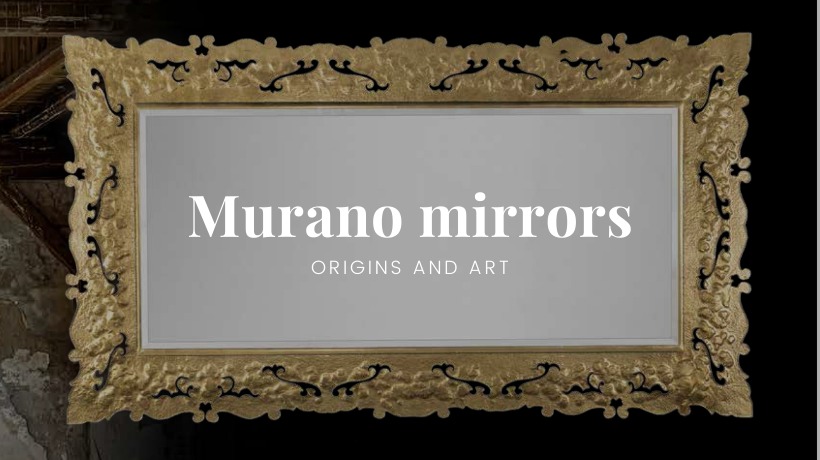
Art is not a mirror on which to reflect the world, rather it is a hammer with which we can sculpt it.
(Bertolt Brecht)
In ancient times it was a worship item during the religious services, it has also been a symbol of life and a luxury object of which only noble people were worthy of, mirrors today are meant for everybody and it has truly become a pure design object.
Notwithstanding their origins that go back to Ancient Egypt, mirrors developed at their best in Murano island, Venice. Here, thanks to the incredible art of Murano glass processing, master glass makers started to produce mirrors with precious details. However, due to the very complex and very expensive working process, initially such production was abandoned and it was taken into consideration again only many years later when Vincenzo Redor officially invented Venetian mirrors.
Being it a part of the fascinating universe of Murano glass, here at Patrizia Volpato we dedicate a section of our production specifically to the original Murano mirrors, unique design items to be displayed in your home.
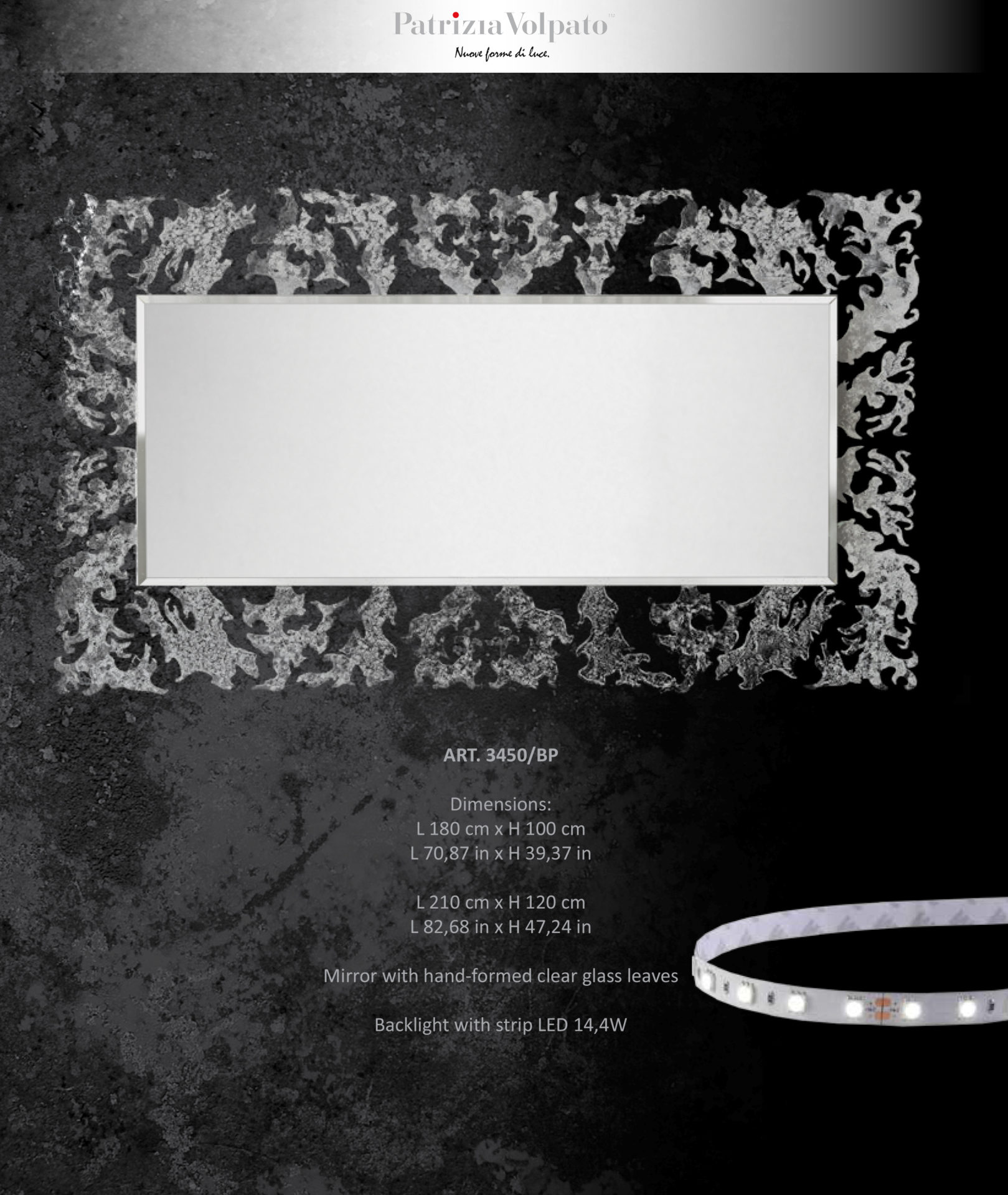
What distinguishes a Murano mirror from a common mirror?
A Venetian mirror maintains such a level of craftmanship that can hardly be found in industrial products or even in “simple” handmade mirrors.
At least four are the different professional experts that collaborate amongst each other for the making of such unique and original masterpieces:
- the carpenter – who creates the wooden structure that will host the actual mirror;
- the mirror maker – who specifically does the mirror by means of the process of silvering;
- the engraver – who does the cutting and the artistic engravings;
- the glass maker – who makes the aesthetic decoration of the frame.
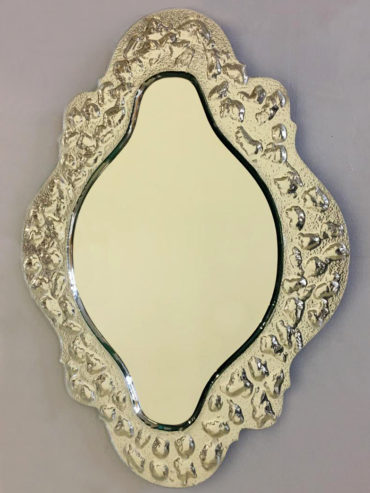
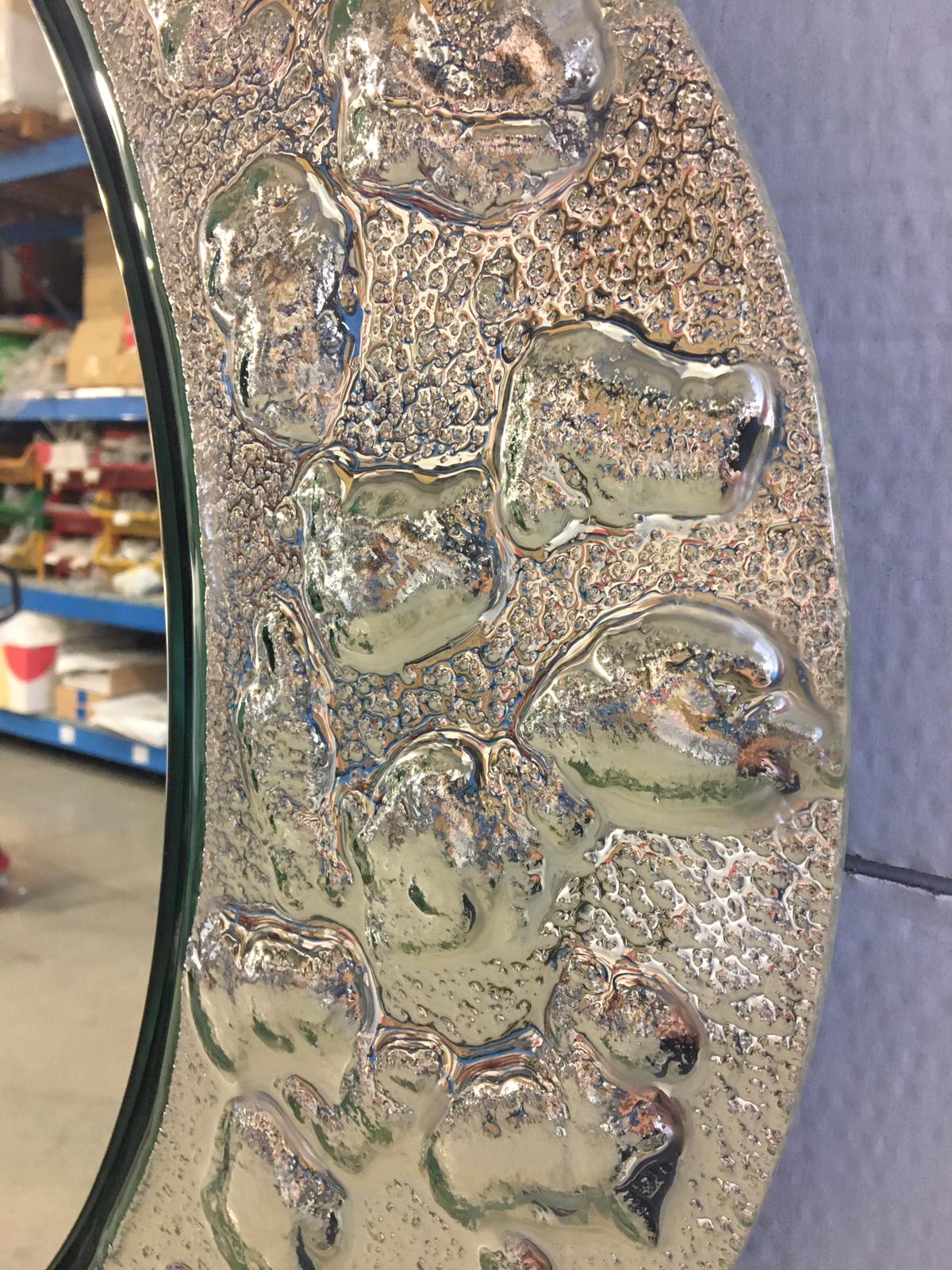
Details of Murano glass mirrors made by our company
Technical characteristics of Murano mirrors
The element that specifically distinguishes Murano mirrors from common mirrors, is the technique called silvering. During the making of the mirror, the basis made of a glass plate is covered by silver, totally by hand. The process is extremely delicate since the craftsman must lay a silver veil with an homogeneous thickness and without impurities. This is precisely how a simple clear glass plate is transformed into a mirror surface.
It is specifically the silvering process then, that makes Murano mirrors so precious and unique and it distinguishes them from any other common sold mirror.
Moreover, in this phase the experts decide for the color tone as well as for the aging, to make the mirror appear as an ancient heirloom and therefore even more fascinating. During the years actually, many variations of this technique were tested, this is why today it is possible to produce different colors and effects, so that each mirror has its unique characteristics.
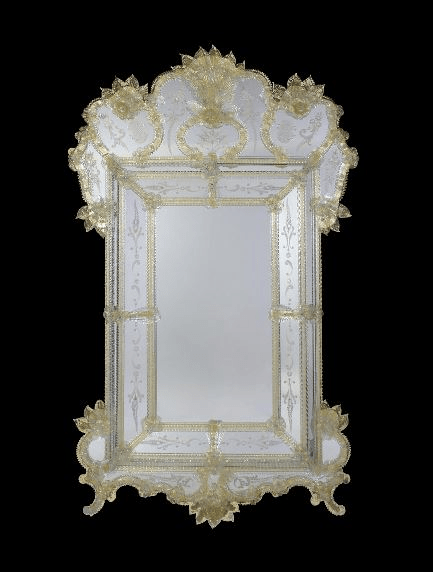
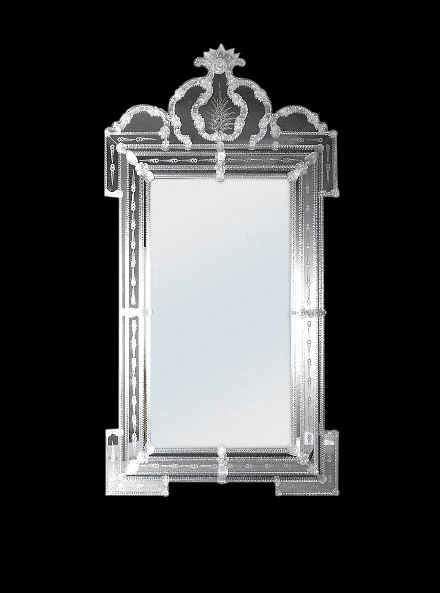
Venetian-style Murano mirrors by Patrizia Volpato
Murano mirrors today: immortal craftmanship
Especially thanks to the proficiency and the craftsmanship handed down from generation to generation of these professional craftsmen, the value of an authentic Murano mirror is currently higher than the value of any other sold mirror.
Unlike industrial production, glass processing in Venice is an art totally done by hand. In particular, only craftsmanship abilities and creativity are capable of offering that precious and exclusive value that no machine is able to offer in the same way.





